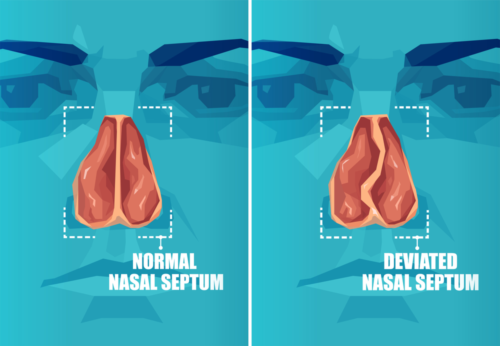Home >> Nose & Sinus >
Incisionless Septoplasty
No-Scalpel Septoplasty (or Incisionless Septoplasty) is a new procedure performed in the office under local anesthesia. The procedure generally takes just a few minutes (10 minutes or so after numbing is complete). This incisionless technique uses pressurized inflatable dilators to remodel the nasal septal spurs and deflection that lead to nasal blockage.
Dr. Aaron Rogers performs this procedure often alongside other related nasal procedures (such as balloon sinuplasty, turbinate reduction, or nasal valve collapse repair). Correction of nasal septal deformities is often critical for patients with nasal blockage and chronic congestion.
This procedure is an alternative to more invasive traditional septoplasty or sinus surgery done in the operating room. Surgery in the operating room is still preferred to treat very severe sinus disease or patients who have certain types of cartilage deformities.
No-scalpel septoplasty begins with local anesthesia applied inside the nostrils, using soaked cotton strips and a small injection. The nasal scopes and magnifying display equipment are then used to position the dilator equipment. After deployment on each side the balloon dilator sits at its fully expanded position for 2-3 minutes. The procedure is repeated on each side for symmetry.

Adults who have failed conservative treatment for congestion or allergies, such as nasal sprays and allergy tablets are excellent candidates. Patients who have had prior septoplasty with a residual spur (or new fracture) who still have blockage are also good candidates for this minimally invasive procedure. Read more from J&J/Acclarent here.
The recovery period from Incisionless Septoplasty is fairly minimal – Usually just a couple of days of mild pain medication, and minimal bleeding. Most people can return to work the next day. Whereas surgical traditional septoplasty produces more discomfort and the body takes longer to bounce back from anesthesia (usually missing 5-7 days of work). Cost of Incisionless Septoplasty also winds up being far lower because no facility or anesthesiology costs are involved.
Doing a septoplasty under general anesthesia instead does give a lot more options for addressing various deformities of the bone and cartilage. But many of the septum problems can be addressed with this no-scalpel procedure. Certain problems can only be fixed by making incisions, so your doctor may recommend a formal septoplasty if that is the case.
We would prefer you wait a few days before flying. There is a risk of a nuisance nosebleed after the procedure and it’s best if that doesn’t happen at 30,000 feet in the air!
Most people take regular over the counter medications for a couple of days. So a little is helpful. We hardly ever have to write stronger narcotics for this procedure.
No! Addressing just the septum and/or turbinates does not change the outer nasal appearance.
In general the nose contributes a a small to moderate amount to snoring issues. We will often see some improvement in sleep, but not likely a cure to obstructive sleep apnea.
Each patient is addressed separately, but the procedure does lend itself to a lower bleeding risk. Some patients have been treated while taking blood thinners. Talk to the doctor to see if this makes sense for you.
